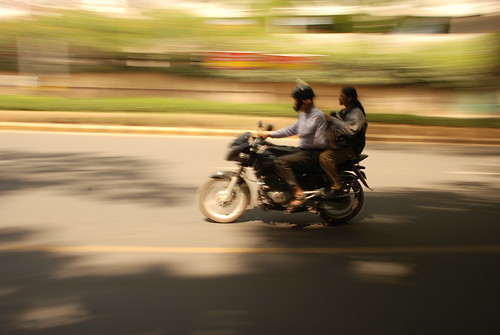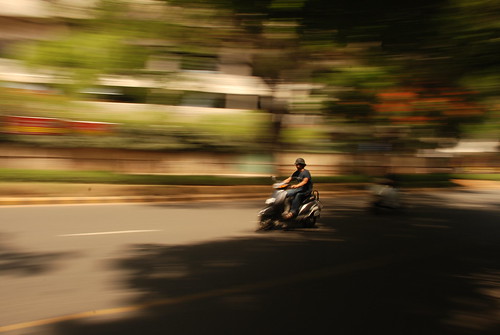Learnt this and still more to learn...
Let's go back a bit to the +2 days when solving problems in physics was something that was really interesting and challenging at the same time. Cracking problems from books in Physics by Halliday-Resnick-Walker and Sears-Zemansky was absorbing and engrossing. For instance, solving problems on topics such as velocity, acceleration, momentum was fascinating but when it came to relative velocity, I have seen many students get a bit jittery. Reason for this is that both my subject and object of reference are in motion. Even initially, I used to have problems, but once I grasped the concepts well, I realized that its nothing difficult but an extension of the solving problems related to velocity.
But why am I talking about relative velocity out of the blues?
Though the link is not that straight forward, I scribbled the above part to draw an analogy.
Think when was the last time, you took an awesome picture using a camera. I can smell something here. When the composition was still, you managed to capture the frame, pretty decently to your personal satisfaction. Now when you tried to photograph any moving subject, you were disappointed with your results. Either the picture was blurred or something was faulty that you didn't like.
Can motion pictures be clicked with ease? I feel, yes.
All one needs to do is to understand the shutter speed and aperture adjustment in the camera. I know of a simple technique called panning, which I learnt recently and with this, you can accurately get the output as the one you would have conceived in your mind.
Without getting into too much of technicals, I would say that the aperture adjustment would control the amount of light entering the camera and the shutter speed would control the duration of time the light is exposed. For panning, I would need a slow speed, may be 1/15 second or slower. To take pics of moving subjects, you may opt for a fast shutter speed to freeze the subject. If the selected shutter speed happens to be faster than the subject speed, the final output that you would get would be static and the pictorial element of motion would be missing.
A recommended technique is to select a slower speed and follow the subject along as you take the photograph. This is essentially what panning is all about. There is no rocket science in this and all it needs is a bit of creativity and imagination and then your pictures are just perfect.

In panning outputs, the main subject is sharp against a blurred background. The idea is very simple, just follow the subject when it passes in front of you and keep continuing doing that as you press the click button on your camera and then even after the shot is taken. It's like the inertia.

How do I do it? Just keep your feet firm and still, and then rotate the top half of your body as you chase your subject. Before doing that, you should have pre-focused your camera, with all the necessary settings at a reference point where your subject will pass through. A darker background is always preferred and adds to the output. Like the relative velocity analogy, in this case, once you are comfortable with the shutter speed and apertures in the camera settings, and add to it a pinch of one's imagination, panning becomes an easy nut to crack.

In all the three pics that you see above, the shutter speed was set at about 1/15 seconds.
More on panning here. Try this and it's really addictive, don't you feel so? Hey, and don't forget to share your pictures, so that even I can learn more.
Keep reading and remain connected.
Labels: Bangalore, blogs, learning, Nikon, panning, Photography

1 Comments:
You have improved a lot dodo :). Way to go.
Post a Comment
<< Home